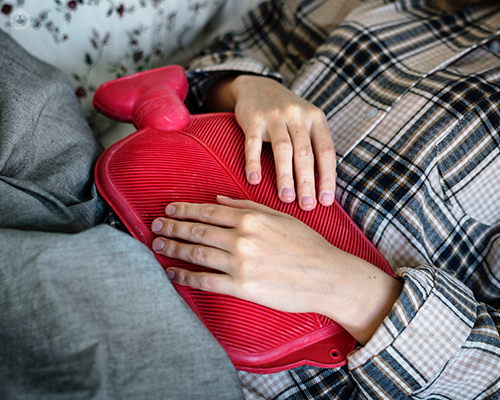What happens when I see the doctor about pelvic pain?
Autore:Dr Kalaivani Lingam is a leading urogynaecologist, with expertise in diagnosing and treating pelvic pain. There are numerous potential causes of pelvic pain, and making a diagnosis can require several tests and scans. Once a diagnosis is made, appropriate treatment can commence.

How common is pelvic pain in the clinic?
Pelvic pain is shown to occur in 37 per 1000 women, which is as common asthma (38 per 1000). Prevalence has been shown to be anything between 2-25%.
When should I see a doctor?
If you develop a sudden onset of abdominal pain with other symptoms such as fainting, vomiting, nausea or fever, this suggests an acute abdomen which needs immediate medical attention as this could indicate ovarian torsion, a urinary infection, an acute pelvic infection or appendicitis.
However, most women will present with a gradual increase in abdominal pain, below the umbilicus. There may be an association with their periods and they may also have changes in their bladder and bowel symptoms. If this pain lasts for 6 months or more, this is called chronic pelvic pain.
Will I have any tests?
You should see your doctor if your pain is getting worse over a period of 2-4 weeks as normally this might suggest infection and simple treatment with antibiotics will help you get better. Simple tests such as a urine culture and vaginal swabs will exclude infections. This can be done even by your practice nurse. If this is negative, then keeping a diary of your symptoms, especially the timing of your periods, can help in making a diagnosis, such as endometriosis. Your GP can organise a scan for you. This will exclude ovarian cysts or fibroids.
If your scans are negative and you still continue to have pain, see your GP who can either give you hormone treatment to see if your pain improves, or they can refer you to a consultant gynaecologist who will carry out further tests, such as CT or MRI scans and laparoscopy. Endometriosis can only be diagnosed by having a laparoscopy, although in the future there will be blood tests to test for endometriosis. Ultrasound scans and MRI scans can also pick up endometriosis, but only very specialist radiologists are skilled to do this.
What could the results mean?
Your specialist gynaecologist will normally ask you a full history of your pain and you will also have an internal examination as in patients with endometriosis, nodules will cause pain during this examination. This again will help make a diagnosis.
There are many other causes of pain, such as adenomyosis, scarring or adhesions, pain bladder syndrome (previously known as interstitial cystitis), irritable bowel or inflammatory bowel syndrome. Sometimes, nerve damage called neuropathy can also cause pain, such as in women who have had an episiotomy which resulted in pudendal neuralgia.
If you experience pelvic pain and have not received a diagnosis, make an appointment with an expert.


